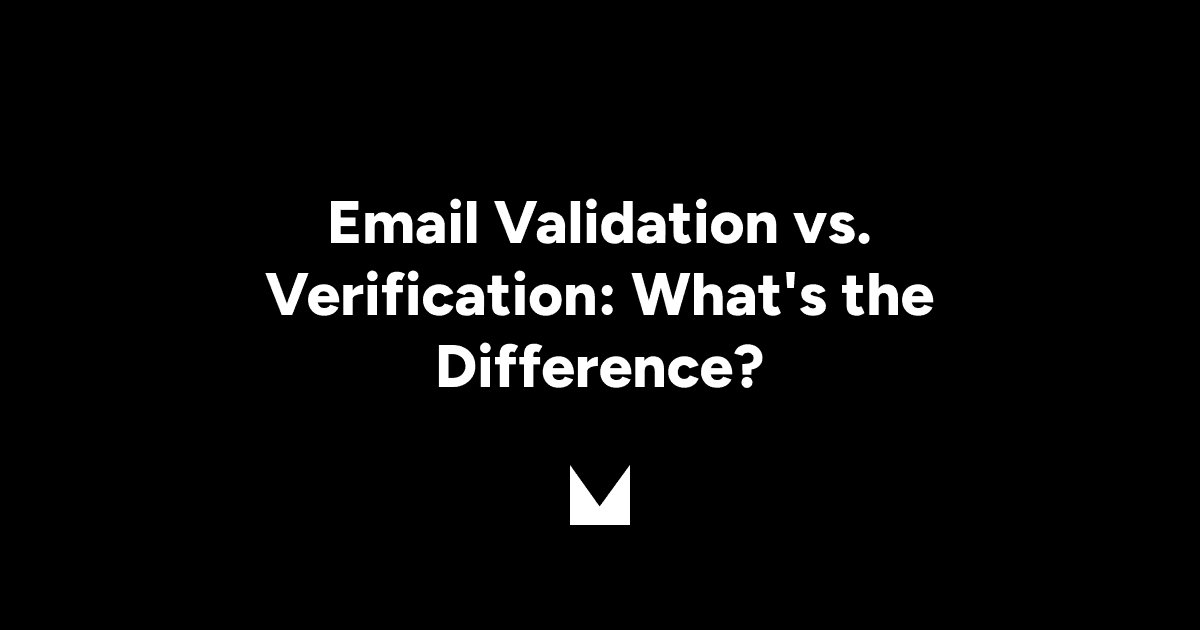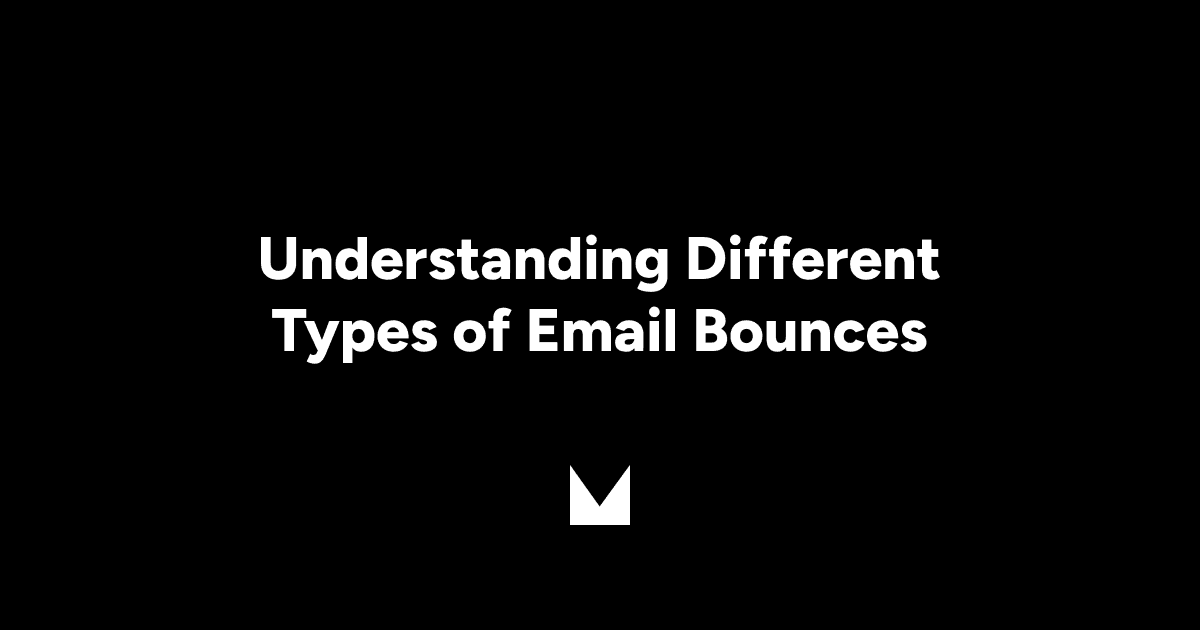Email marketing
Email marketing
Why you should validate emails before sending marketing campaigns
Learn the importance of email validation, explore various methods to verify email addresses, and understand how it can improve deliverability, reduce bounce rates, and protect your sender reputation.
Email validation is a crucial step in ensuring your marketing efforts are effective and your communications reach the right audience. In this blog, we'll delve into what email validation is, the various methods available, and the potential consequences of neglecting this important process.
What is Email Validation?
Email validation is the process of verifying whether an email address is both real and active. Think of it as a quality check before you send out your marketing emails. The primary goal is to ensure that your emails reach genuine recipients, keeping your email list clean and reducing the chances of your messages landing in spam folders.
By validating email addresses, you:
Improve Deliverability: Ensure your emails reach real people.
Maintain Sender Reputation: Avoid being flagged as spam.
Optimize Resources: Save time and money by targeting active users.
Types of Email Validation Methods
here are several methods to validate email addresses, each offering different levels of verification:
Syntax Check: Similar to spell-checking, this method ensures the email address follows the correct format (e.g., contains an "@" symbol and a valid domain). It can quickly filter out improperly formatted addresses.
Domain Check: Verifies that the domain portion of the email (the part after "@") is valid and exists. It ensures the domain is capable of receiving emails.
Mailbox Check:Checks whether the specific mailbox exists on the domain.This confirms that the email address is not only valid in format but also active.
Ping Test: Sends a brief message to the email server to verify the address is active and able to receive emails. This provides real-time confirmation of an email’s activity status.
The Consequences of Neglecting Email Validation
Skipping email validation might seem like a time-saver, but it can lead to significant issues:
Increased Bounce Rates
Sending emails to invalid addresses results in bounces, which are like letters being returned to sender. High bounce rates can damage your sender reputation, making it harder for your emails to reach inboxes in the future.
Spam Folder Landings
Email providers monitor bounce rates and sender reputation. Consistently sending emails to invalid addresses can cause your emails to be flagged as spam, reducing your overall deliverability.
Wasted Resources
Sending emails to inactive or fake addresses wastes both time and money. It’s akin to shouting into an empty room—your efforts don’t reach any potential customers.
Damage to Brand Reputation
Repeatedly sending emails to invalid addresses can lead to a poor brand reputation. Customers may perceive your brand as unprofessional or careless with their contact information.
Email validation is like a spell-check for your contact list. It helps you avoid embarrassing mistakes, maintain a healthy sender reputation, and ensure your messages reach the right inboxes. By investing time in validating your email addresses, you can enhance the effectiveness of your marketing campaigns, save valuable resources, and build stronger relationships with your audience.
Email validation is a crucial step in ensuring your marketing efforts are effective and your communications reach the right audience. In this blog, we'll delve into what email validation is, the various methods available, and the potential consequences of neglecting this important process.
What is Email Validation?
Email validation is the process of verifying whether an email address is both real and active. Think of it as a quality check before you send out your marketing emails. The primary goal is to ensure that your emails reach genuine recipients, keeping your email list clean and reducing the chances of your messages landing in spam folders.
By validating email addresses, you:
Improve Deliverability: Ensure your emails reach real people.
Maintain Sender Reputation: Avoid being flagged as spam.
Optimize Resources: Save time and money by targeting active users.
Types of Email Validation Methods
here are several methods to validate email addresses, each offering different levels of verification:
Syntax Check: Similar to spell-checking, this method ensures the email address follows the correct format (e.g., contains an "@" symbol and a valid domain). It can quickly filter out improperly formatted addresses.
Domain Check: Verifies that the domain portion of the email (the part after "@") is valid and exists. It ensures the domain is capable of receiving emails.
Mailbox Check:Checks whether the specific mailbox exists on the domain.This confirms that the email address is not only valid in format but also active.
Ping Test: Sends a brief message to the email server to verify the address is active and able to receive emails. This provides real-time confirmation of an email’s activity status.
The Consequences of Neglecting Email Validation
Skipping email validation might seem like a time-saver, but it can lead to significant issues:
Increased Bounce Rates
Sending emails to invalid addresses results in bounces, which are like letters being returned to sender. High bounce rates can damage your sender reputation, making it harder for your emails to reach inboxes in the future.
Spam Folder Landings
Email providers monitor bounce rates and sender reputation. Consistently sending emails to invalid addresses can cause your emails to be flagged as spam, reducing your overall deliverability.
Wasted Resources
Sending emails to inactive or fake addresses wastes both time and money. It’s akin to shouting into an empty room—your efforts don’t reach any potential customers.
Damage to Brand Reputation
Repeatedly sending emails to invalid addresses can lead to a poor brand reputation. Customers may perceive your brand as unprofessional or careless with their contact information.
Email validation is like a spell-check for your contact list. It helps you avoid embarrassing mistakes, maintain a healthy sender reputation, and ensure your messages reach the right inboxes. By investing time in validating your email addresses, you can enhance the effectiveness of your marketing campaigns, save valuable resources, and build stronger relationships with your audience.
Email validation is a crucial step in ensuring your marketing efforts are effective and your communications reach the right audience. In this blog, we'll delve into what email validation is, the various methods available, and the potential consequences of neglecting this important process.
What is Email Validation?
Email validation is the process of verifying whether an email address is both real and active. Think of it as a quality check before you send out your marketing emails. The primary goal is to ensure that your emails reach genuine recipients, keeping your email list clean and reducing the chances of your messages landing in spam folders.
By validating email addresses, you:
Improve Deliverability: Ensure your emails reach real people.
Maintain Sender Reputation: Avoid being flagged as spam.
Optimize Resources: Save time and money by targeting active users.
Types of Email Validation Methods
here are several methods to validate email addresses, each offering different levels of verification:
Syntax Check: Similar to spell-checking, this method ensures the email address follows the correct format (e.g., contains an "@" symbol and a valid domain). It can quickly filter out improperly formatted addresses.
Domain Check: Verifies that the domain portion of the email (the part after "@") is valid and exists. It ensures the domain is capable of receiving emails.
Mailbox Check:Checks whether the specific mailbox exists on the domain.This confirms that the email address is not only valid in format but also active.
Ping Test: Sends a brief message to the email server to verify the address is active and able to receive emails. This provides real-time confirmation of an email’s activity status.
The Consequences of Neglecting Email Validation
Skipping email validation might seem like a time-saver, but it can lead to significant issues:
Increased Bounce Rates
Sending emails to invalid addresses results in bounces, which are like letters being returned to sender. High bounce rates can damage your sender reputation, making it harder for your emails to reach inboxes in the future.
Spam Folder Landings
Email providers monitor bounce rates and sender reputation. Consistently sending emails to invalid addresses can cause your emails to be flagged as spam, reducing your overall deliverability.
Wasted Resources
Sending emails to inactive or fake addresses wastes both time and money. It’s akin to shouting into an empty room—your efforts don’t reach any potential customers.
Damage to Brand Reputation
Repeatedly sending emails to invalid addresses can lead to a poor brand reputation. Customers may perceive your brand as unprofessional or careless with their contact information.
Email validation is like a spell-check for your contact list. It helps you avoid embarrassing mistakes, maintain a healthy sender reputation, and ensure your messages reach the right inboxes. By investing time in validating your email addresses, you can enhance the effectiveness of your marketing campaigns, save valuable resources, and build stronger relationships with your audience.
Like this article? Share it.
Improve sender reputation and reduce costs with Maki
Use Maki to do real-time validation even before your users sign up!
You might also like
Check out our other articles on email marketing and email validation


